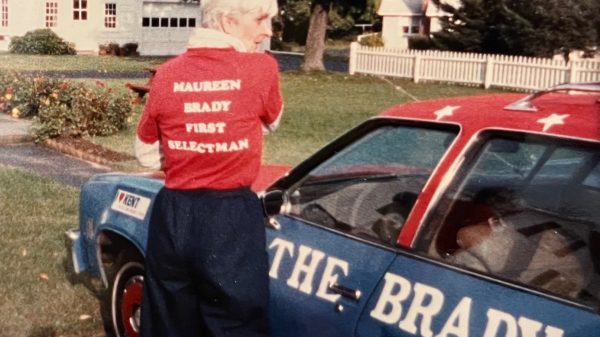
We are in the midst of football frenzy. The regular season is over, and we are on to the playoffs and ultimately the Super Bowl.
In my house, reaching this point has meant a blitz of professional games on Sundays, Mondays, Thursdays and holidays—a total of 272 opportunities for my husband to find a game. He likes to channel hop, so some days he watched at least some of all the games broadcast.
Add to that, the college bowl games. There were 47 of them in 2024-25, three more than the previous year. Indeed, the number of bowl games seems to be soaring. The venerable Rose Bowl, inaugurated in 1902, was the first and only bowl game until 1934. It took until 1950 to reach nine games, increasing by only two more between then and 1975. But since 1990, 26 bowls have been added, and more are being proposed.
With the increasing number of games has come an inevitable increase in mediocrity. The current level means that more than 80 college teams, out of the 131 playing at the Football Bowl Subdivision level, are needed to fill all the bowl slots. Thus, run-of-the-mill teams, even some with losing records, are chosen to take to the playing field. Reaching a bowl game just doesn’t mean what it used to.
Now, I should pause right here and emphatically state that I do not hate football. Once a pretty avid fan, my interest has ebbed in recent years but I can still enjoy a game. In the previous sentence the operative words are, of course, “a game,” not three or four in a day.
“The roar of the crowds, the hysterical ranting of the commentators, the insistent theme music, the blaring advertisements—all of this makes a football afternoon a prolonged sound bath.“
My tolerance is further diminished because my husband and I live in a relatively small in-law apartment while I rent the larger part of my house to my nephew and his family. My husband is hard of hearing and the television is always on “high-deaf,” making it difficult for me to think past the noise.
The roar of the crowds, the hysterical ranting of the commentators, the insistent theme music, the blaring advertisements—all of these make a football afternoon a prolonged sound bath. And the inane questions from interviewers leave me rolling my eyes. Interviewer to coach: “What do you need to do to change this game’s momentum?” Answer: “To score more points.” Duh.
No matter how I work at it, I find the proliferation of football on television tedious. This year I found myself dumfounded by the reality of a Mayo Bowl. Inevitably, my husband had it on and I felt faintly nauseated for ESPN broadcasters Matt Barrie and Dan Mullen, who were forced to consume snack after mayonnaise-laden snack while announcing that game.
Even more embarrassing was the Pop-Tarts Bowl, where professional announcers Tom Hart and Jordan Rodgers ate and debated the relative merits of Frosted Strawberry Milkshake or Frosted Chocolatey Chip Pancake Pop-Tarts. A pinnacle of their careers, no doubt. One can only wonder what they will be required to do when a Ty D Bol bowl game is finally added to the schedule.
But, miraculously, even the most mundane of these contests is a cash cow for broadcasters, corporate sponsors and at least some of the teams. Figures released in the closing days of 2024 showed the Pop-Tarts Bowl breaking a 10-year-old record for viewership.
Why do broadcasters promote such unexceptional contests? The obvious reason is money. When Georgia met Texas for the SEC Championship Dec. 7, it drew nearly 17 million viewers, a good number to sell to advertisers–which explains why four networks paid a combined total of $110 billion for broadcast rights from 2023 to 2033, up 70.4 billion from the previous eight years. Clearly, we are talking big bucks.
Football is currently the most popular televised sport in the United States, but what does the televiewer get for his investment of time and perhaps money. Kirk Goldsberry and Katherine Rowe examined the makeup of professional games as part of a course they taught at the University of Texas. They found that the average televised football game lasts more than three hours, but viewers see only 18 minutes of action and endure a whopping 50 minutes of commercials.
For me, modern football is too much of a muchness. But like many things that establish a monumental preeminence, it may have its own demise clutched to its bosom. With increased public scrutiny has come a growing awareness of the toll the sport takes on players.
Seventy-eight to 81 percent of parents believe football is dangerous for their children. While many still allow their children to play, others do not. Participation in tackle football for young children has decreased by 18 percent since 2019, and by 13 percent for pre-adolescents.
With feeding programs declining in popularity, college and professional teams may soon have a smaller pool of talented athletes from which to recruit. Will the proliferation of games suffer a similar decline? I can only hope.
Kathryn Boughton is editor of the Kent Dispatch. Her views do not necessarily reflect those of Kent News, Inc., the parent company of the Kent Dispatch.



































Karin
January 10, 2025 at 7:46 pm
Hi Kathryn,
Wireless earphones might be the solution to the football noise frenzy in your house.